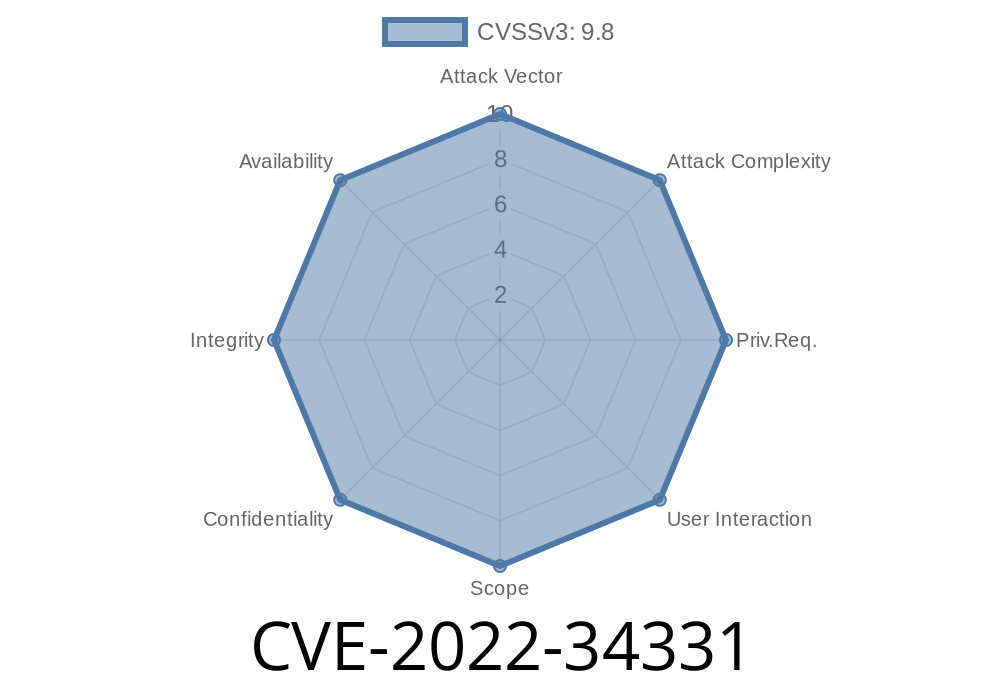CVE-2022-34331 is a critical vulnerability that can cause a network adapter to become improperly configured, leading to the desired VEPA configuration being disabled. After performing a sequence of Power FW950 and FW101 maintenance operations on the SRIOV network adapter, the vulnerability gets triggered. The issue has been reported by IBM X-Force, and carries an IBM X-Force ID of 229695. This long read post aims to provide detailed information on the vulnerability, including its exploit details, associated risks, and available patches.
Vulnerability Summary
The vulnerability, CVE-2022-34331, arises when a series of Power FW950, FW101 maintenance operations are performed on the SRIOV network adapter. As a result, an attacker can use this vulnerability to bypass the intended VEPA configuration controls, leading to a compromise of the affected system.
This vulnerability affects IBM POWER8 and POWER9 systems running specific firmware versions (FW950 and FW101).
Exploit Details
An attacker wishing to exploit this vulnerability would need to perform a sequence of Power FW950, FW101 maintenance operations on an affected SRIOV network adapter. The following code snippet illustrates the vulnerable procedure:
def perform_maintenance_operations(adapter):
fw950_operation(adapter)
fw101_operation(adapter)
if adapter.is_configured_improperly():
disable_vepa_configuration(adapter)
Once the attacker has successfully executed these operations, the desired VEPA configuration can be disabled. This can lead to unauthorized access and other potential security risks.
Impact and Risks
The impact of this vulnerability varies depending on the affected hardware and firmware, as well as the network configuration in use. With an exploitation of CVE-2022-34331, an attacker can:
Mitigation Measures and Patches
To address this vulnerability, IBM has released a firmware update that corrects the configuration issue. Users who are affected by CVE-2022-34331 should make sure to apply the updates provided by IBM. The IBM Power firmware update can be found at the following link:
IBM Power System Firmware Update
In addition to firmware updates, users should take appropriate steps to monitor and secure their systems, including:
Conclusion and Recommendations
CVE-2022-34331 is a critical vulnerability that requires prompt action from affected users. By applying the necessary firmware updates and following the recommended mitigation measures, organizations can safeguard their IBM POWER8 and POWER9 systems from exploitation. It is essential to remain vigilant and stay up to date with the latest threat intelligence to protect against evolving cyber threats.
For more information on this vulnerability, refer to the following resources
1. CVE-2022-34331 Vulnerability Details
2. IBM X-Force Vulnerability Details
Timeline
Published on: 11/11/2022 18:15:00 UTC
Last modified on: 11/17/2022 14:42:00 UTC
